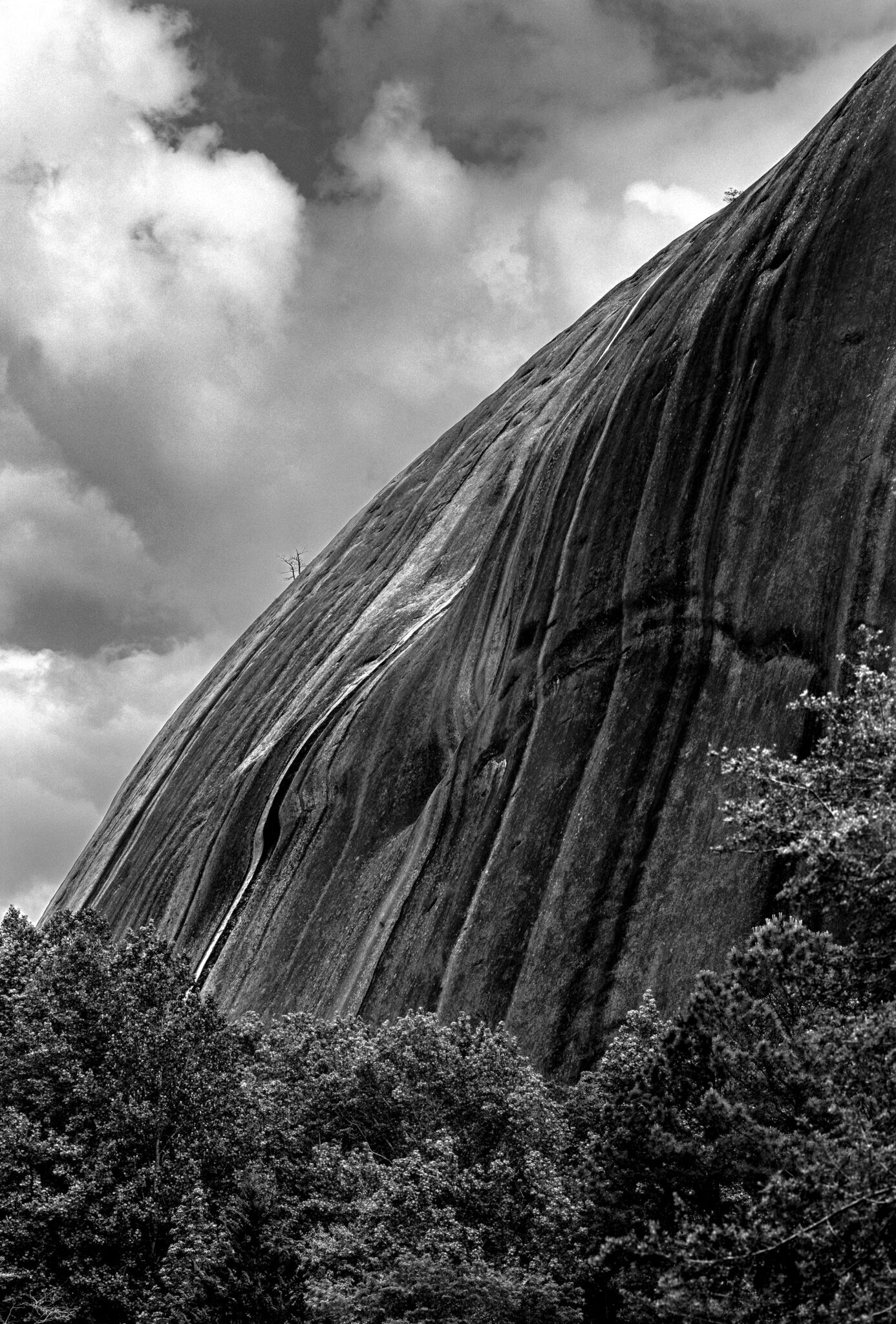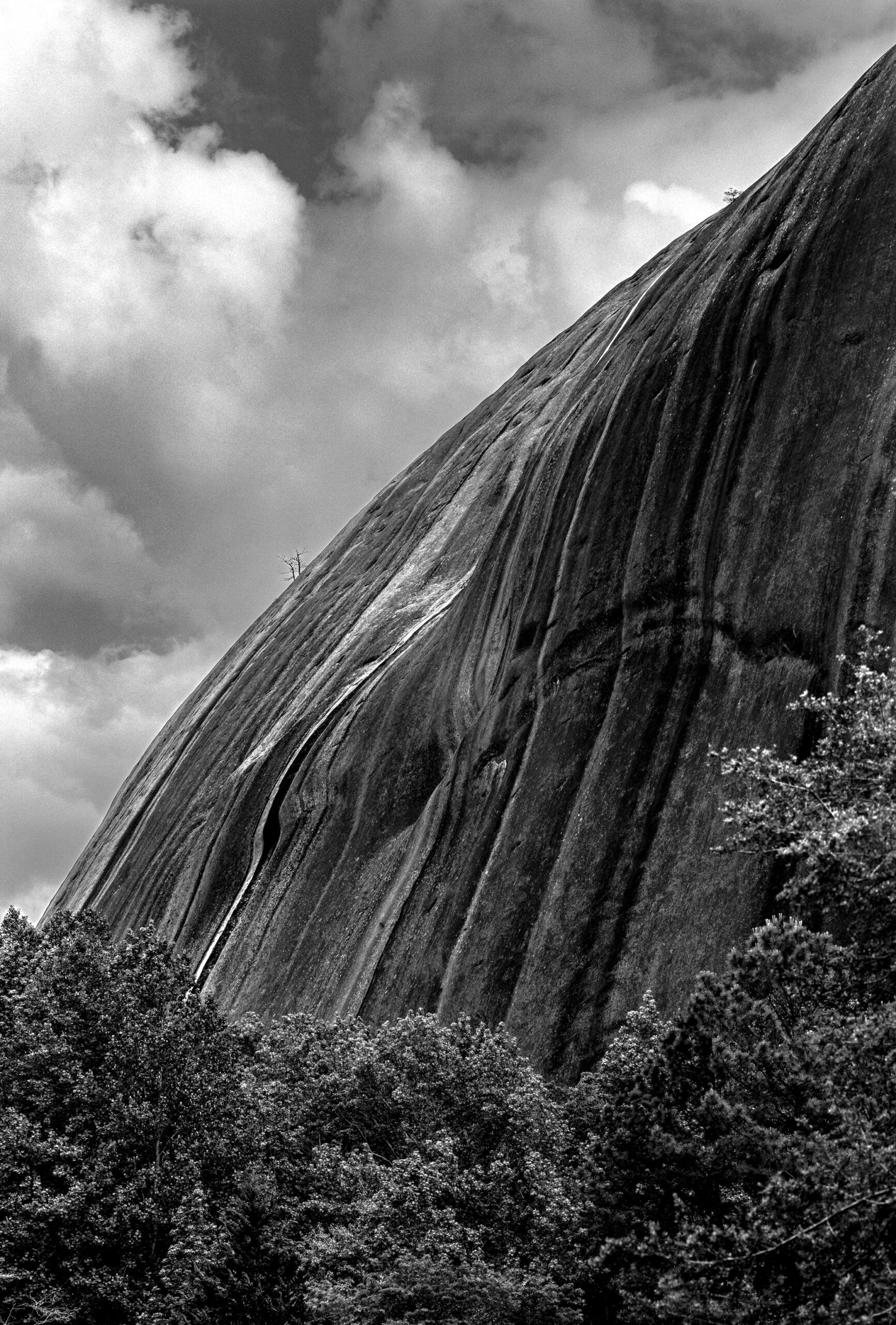IMAGES OF STONE MOUNTAIN

After a several-decade-long hiatus from photography, I felt the call to return. I remembered something Annie Leibovitz said to a student after they asked about where to begin with a project. Her answer was simple. Start with those close to you: your friends, your family, your neighborhood. Stone Mountain was an area I was familiar with but never fully explored its creative potential
Images of Stone Mountain is a photographic study highlighting the Quartz Monzonite Dome and the surrounding area at Stone Mountain Park, Georgia.
The origin of Stone Mountain began over 300 million years ago, with the collision of two subcontinents when the Earth was forming. It took an additional 285 million years for the magma to cool and for erosion to uncover the mountain fully. Still, only one-third of it is visible, with the remains spread out over nine miles underground. It was inhabited around nine-thousand years ago by the Early Archaic People and millennia later by the Cherokee, Creek, and Muskogee Creek Nations. This all occurred before their forced exile as part of the Indian Removal Act of 1830. Both the quarry operations and the controversial Confederate Memorial Carving have left their long-lasting mark on the mountain. Unfortunately, we will never be able to witness the mountain in its true natural state. Prior to the carving, there was a breast-high level circular wall composed completely of loose, fragmented rocks. The origin of the now destroyed wall is still unknown to this day, but experts believe it was initially built for ceremonial purposes. There was also a geological formation known as “the Devil’s Crossroads” that served as a natural compass. Historical writings suggest it was a beloved spot for appreciating nature and picnicking. Unfortunately, before any photographs were taken, the formation was cut and sold as high-quality granite.
In more recent history, Stone Mountain is referenced in Martin Luther King Jr.’s historic “I Have a Dream” speech. His clarion call was a passionate plea to heal a deeply troubled nation.
The choice was made to record these images in B+W to convey a timeless and classic look to the initial series.
I mainly shoot medium format Black and White film. After processing, high-res files are made with a Noritsu scanner; Lightroom is then used to create the final image.
Although my technique is hybrid, I believe it combines the best of two worlds: the tonality of film and the post-processing advantage of digital editing. Analog capture is challenging and occasionally frustrating but can be a very rewarding experience, especially for landscape photography.
My goal with this project is that in creating these images, we can come together in appreciation for this incredible work of nature. Hopefully, this will spark further dialogue about preserving Stone Mountain for generations to come.
I hope to share with the viewer the same emotional connection I felt when I created these landscape images.
I hope that these images will inspire the viewer to reach the summit, hike the trails, and research the history of this monadnock.
This is the beginning of a series to photograph other sites in Georgia and throughout the South.
Many thanks to the master Ansel Adams, Imogen, the Westons, and all the members of Group 64 for the inspiration.
